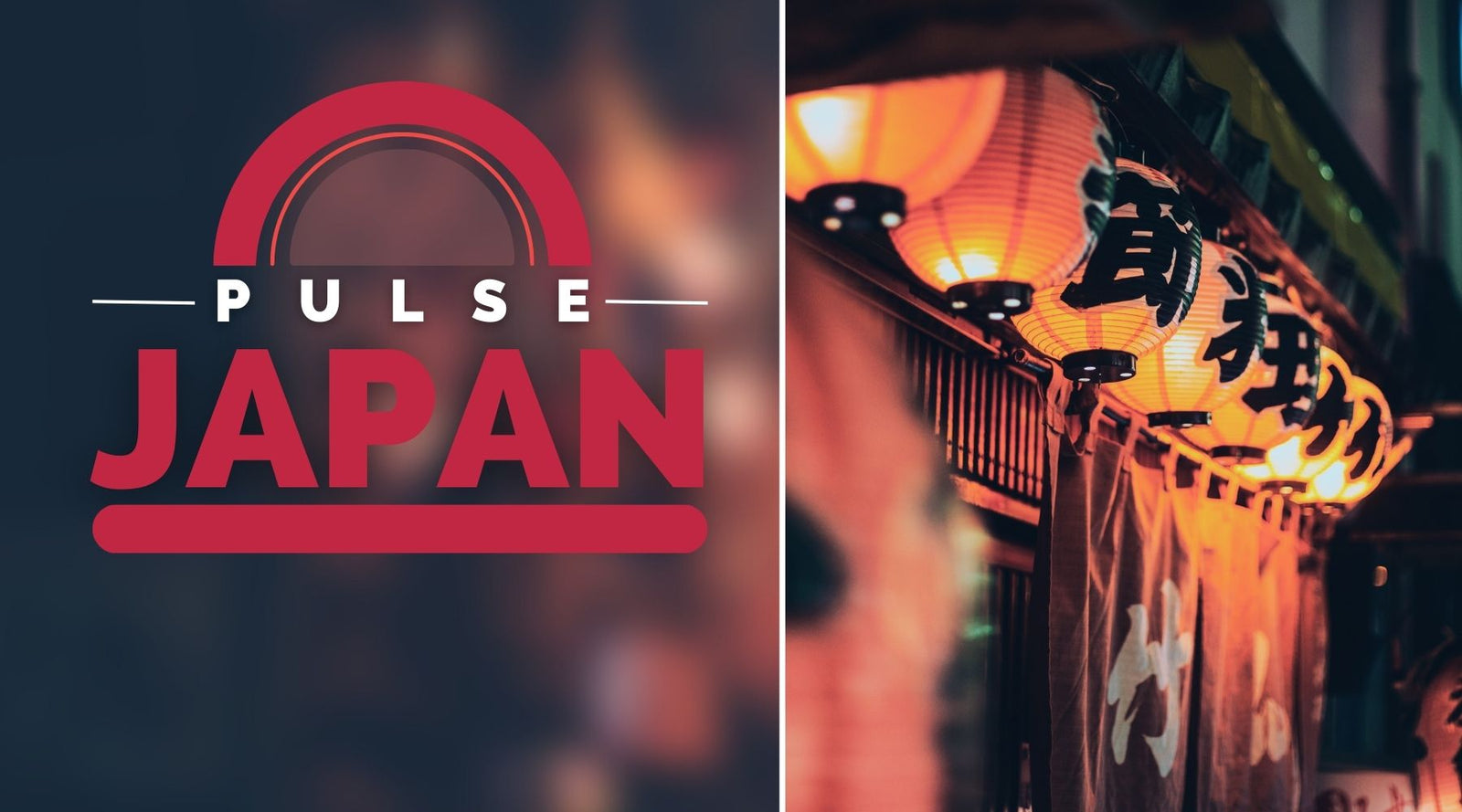10 Stunning Destinations in Japan You Must Visit in Your Lifetime

Japan offers an exquisite tapestry of ancient traditions, ultra-modern living, and breathtaking natural beauty. Each destination within its archipelago tells a unique story, where the serene whispers of Shinto shrines coexist with the pulsating beat of neon-lit cities.
From the northern snow-capped peaks of Hokkaido to the subtropical beaches of Okinawa, Japan's diverse landscapes are matched only by its rich cultural heritage, cutting-edge technology, and world-renowned cuisine.
As you plan a journey to the Land of the Rising Sun, envision immersing yourself in the bustling streets of Tokyo, where innovation meets history. Imagine exploring the historic temples and geisha districts of Kyoto, a city that echoes the refined elegance of Japan's imperial past.
Contemplate the poignant serenity of Hiroshima's Peace Memorial Park, a site of deep reflection and hope. Marvel at the towering majesty of Mount Fuji, an iconic symbol of Japan's natural grandeur. Each destination not only captivates your senses but also invites you to delve deeper into an intricate web of experiences that can only be found within this fascinating country.
The following list is not exhaustive but highlights some of the most remarkable places that make Japan a must-visit destination. These are locales that promise to leave an indelible mark on your heart, long after your footsteps have faded.
1. Kyoto's Arashiyama Bamboo Grove
Experience the Serenity of the Bamboo Path
The Arashiyama Bamboo Grove in Kyoto is one of the most serene and beautiful natural sites in Japan. As you walk along the narrow bamboo-lined path, you are surrounded by the tall green stalks swaying gently in the wind. Sunlight filters through the bamboo creating a magical, peaceful atmosphere.
It's easy to understand why the bamboo grove is considered one of Kyoto's top attractions. The sound of rustling bamboo leaves is soothing to the senses. Try closing your eyes, listening to the bamboo sway, and getting lost in your own thoughts for a moment of true Zen.
Exploring the Nearby Tenryu-ji Temple and Togetsukyo Bridge
After experiencing the tranquility of the bamboo forest, take some time to explore the sights near Arashiyama. Tenryu-ji Temple dates back to 1339 and has beautiful zen gardens and architecture.
The Hojo (Abbot's Hall) is a Zen-style building with an intricate wooden interior. From the temple, it's a pleasant walk along a path to Togetsukyo Bridge. This iconic bridge spans the Katsura River with a backdrop of gentle mountains.
It's especially lovely as the sun is setting or during cherry blossom season when the trees along the river banks are in full bloom.
2. The Snowy Peaks of Hokkaido
Skiing and Snowboarding in Niseko
Hokkaido is famous for its snow festival and world-class ski resorts. Niseko offers incredible skiing and snowboarding for all ability levels. With over 800 snow-covered hectares, Niseko United has something for everyone.
Beginners can take lessons and stick to gentle slopes while experts can challenge themselves on steep off-piste terrain and tree runs. After an exhilarating day hitting the powdery backcountry, unwind by soaking in an outdoor onsen hot spring bath surrounded by snow-capped mountains.
Visiting the Pristine Shikisai-no-Oka Flower Fields
In spring and summer, Hokkaido transforms into a vibrant wonderland bursting with colorful wildflowers. Shikisai-no-Oka (translated as "the hill of colors") is a picturesque plateau with panoramic views over Biei's rolling hills and farms.
Walk along curving pathways through flower fields filled with tulips, poppies, marigolds, and more. It's incredibly photogenic, especially with the unique patchwork land formations in the distance. Don't miss this incredible display of nature's beauty!
3. The Historic Shrines of Nikko
Marvel at the Intricacies of Toshogu Shrine
Nikko National Park is home to Toshogu, an ornate Shinto shrine dedicated to Tokugawa Ieyasu, the founder of the Edo period. The shrine complex contains over a dozen buildings, each intricately decorated with elaborate wood carvings and gold leaf accents.
The craftsmanship is unbelievable with vivid colors, lifelike details, and clever illusions. For instance, the famous "see no evil, speak no evil, hear no evil" monkey carving depicts lifelike facial expressions. Other carvings include mythical beasts, flowers, and natural scenery.
Allow plenty of time here to admire the impressive ancient architecture.
Enjoy the Natural Beauty of Kegon Falls
Surrounding the shrines of Nikko lies a landscape of verdant mountains, lakes, and waterfalls. Kegon Falls is especially impressive as one of Japan's largest waterfalls at nearly 100 meters tall.
Walk along platforms offering different perspectives on the powerful cascading waters. Or take an elevator down to the bottom of the falls to view the rumbling cascade from below.
Nearby Lake Chuzenji reflects the surrounding nature in its calm waters. With ancient shrines and unspoiled natural vistas, Nikko is a must-visit when exploring Japan's historical relationship with nature.
4. The Floating Torii of Miyajima
Discover Itsukushima Shrine at High Tide
The island of Miyajima near Hiroshima is home to the iconic "floating" torii gate of Itsukushima Shrine. When the tide comes in, the vermillion gate positioned in the sea seems to float gracefully on the water's surface.
Walk along the wooden pathways around the shrine complex and admire the traditional buildings built overwater against a backdrop of forested mountains. Time your visit for high tide when the Torii gate is surrounded by water, creating perfect picture postcard views.
At low tide, you can walk right up to the gate. But there's something magical about seeing the crimson pillars rising out of the sea when the tide is high.
Hike Up to Mount Misen for Panoramic Views
Take the cable car or hike up Mount Misen behind Itsukushima Shrine for sweeping panoramas over the Seto Inland Sea dotted with islands. The views from the top are phenomenal, especially on clear days.
You can even see across to Hiroshima City in the distance. Descending by foot takes a few hours which allows time to stop at scenic lookout points along the way. Keep an eye out for wild monkeys that inhabit the forest but avoid getting too close!
5. The Neon Lights of Tokyo's Shibuya Crossing
Immerse in the Bustle of the World's Busiest Intersection
At Shibuya Crossing in downtown Tokyo, stand in awe watching crowds of people crisscrossing the streets when traffic lights turn red for vehicles. Rumored to be the world's busiest pedestrian crossing, over 2,500 people traverse Shibuya Crossing every time the walk sign turns green.
Surrounded by giant video billboards and neon signs, the energy is palpable as people stream across the intersection from all directions.
Join the pulsing wave of pedestrians or watch the action unfold from a distance at one of Shibuya's overhead walkways or coffee shops with views of the iconic scramble.
Explore the Surrounding Fashion and Entertainment Hubs
Shibuya is one of Tokyo's most colorful, vibrant districts, especially popular with young fashionistas and music lovers.
After experiencing the famous Shibuya Crossing intersection, explore the surrounding streets packed with boutiques showcasing avant-garde Japanese streetwear labels, trendy cafes, and an endless array of restaurants. In the evening, sing karaoke in soundproof booths, dance the night away at nightclubs, or wander the narrow alleys lit by neon signs.
With so much to see and do, Shibuya captures the youthful, creative energy that makes Tokyo such an exciting capital.
6. The Traditional Higashiyama District in Kyoto
Stroll Through the Historic Streets of Gion
For a glimpse of old-world Japan, stroll through Kyoto's atmospheric Higashiyama district. The narrow cobblestone lanes lined with wooden machiya merchant houses evoke a bygone era in Japan.
Must-see sights include the Yasaka Shrine with vermillion gates and the pedestrian-only Ninenzaka slope filled with traditional shops and teahouses. At the top of the hill lies the famous Kiyomizu-dera temple known for its expansive views over Kyoto. After exploring the temple's grounds, head to the historic geisha district of Gion.
Here you may spot a geisha or maiko (geisha apprentice) scurrying between the traditional wooden buildings on their way to perform at tea houses or restaurants.
Visit Kiyomizu-dera Temple for Stunning City Views
No visit to Kyoto is complete without seeing the UNESCO World Heritage Site of Kiyomizu-dera Temple. This beloved temple is one of Kyoto's most popular attractions, drawing visitors seeking both cultural sightseeing and sweeping city views.
Walk through the enormous vermillion gates then along pathways leading up to the main hall built atop wooden pillars jutting out from the hillside. On a sunny day, the views over Kyoto's sea of tiled rooftops is sublime.
Don't miss the temple's famous "stage" balcony where you can stand surrounded on three sides by the valley below - a perfect spot for photos!
7. The Peace Memorial Park in Hiroshima
Reflect at the Hiroshima Peace Memorial Museum
Built-in Hiroshima's Peace Memorial Park, the sobering Hiroshima Peace Memorial Museum documents the 1945 atomic bombing. While difficult to take in, the museum offers important historical context and insight into the devastating human impact and aftermath.
Visitors can view damaged artifacts, survivor accounts, photographs depicting the aftermath, and multimedia displays recounting the event. Outside, the park's monuments including the A-bomb Dome ruins are haunting reminders of the tragedy.
The flame burning at the cenotaph will only be extinguished when the last nuclear weapon on earth has been destroyed - a hopeful yet distant dream.
Pay Your Respect at the Atomic Bomb Dome
Perhaps the starkest reminder of the destruction caused by the 1945 atomic blast stands near Hiroshima's Peace Park. The Atomic Bomb Dome, also called Genbaku Dome, was originally an exhibition hall dating back to 1915.
Because the bomb detonated almost directly above the building, it was one of the few structures left partially standing near ground zero. Today it remains in its shocking post-blast state as a UNESCO World Heritage Site.
Seeing the crumbling brick and steel building is a sobering experience for visitors from around the world who come seeking perspective on the horrors of nuclear war.
8. The Iconic Mount Fuji
Climb Japan’s Highest Peak for Sunrise
Mount Fuji's symmetrical cone shape rising 3,776 meters makes it instantly recognizable as Japan's highest and most iconic peak. Hiking Mount Fuji is a popular pilgrimage, the best time for July and August when the mountain is open and visibility tends to be clearest.
Most hikers start their ascent around midnight and hike through the night to reach the summit in time to watch the incredible sight of sunrise from Mount Fuji's peak as the first light hits the mountain.
It's a challenging yet breathtaking experience surrounded by an ocean of clouds as the sky glows red and orange.
Capture the Reflection at Lake Kawaguchi
One of the classic views of Mount Fuji is from the northern shores of Lake Kawaguchi in Fuji Five Lakes region. On a clear day, the mountain reflects almost perfectly on the still waters of the lake against a backdrop of blue sky.
Photographers flock here early morning to capture iconic shots of the crimson sun rising behind Mount Fuji's silhouette. Rent a row boat and paddle out onto the lake for an even more stunning angle.
Or relax by the water enjoying the view at one of Lake Kawaguchi's hot spring resorts after taking in the majestic sight of Fuji.
9. The Ancient Capital of Nara
Interact with Friendly Deer in Nara Park
In Japan's first permanent capital of Nara lies a giant park filled with over 1,000 freely roaming deer who have called this area home for centuries.
Considered national treasures, the deer are surprisingly friendly and eager to interact with visitors. Bowing to the deer is said to show respect. If you have any deer crackers, the deer will gently take them directly from your hand.
Walking through the expansive parklands while petting and feeding the affectionate deer is a fun experience for all ages. Just be aware that they can get a little pushy when hungry!
Admire the Great Buddha at Todai-ji Temple
Nara is also home to several historical Buddhist temples, the most impressive being Todai-ji with its Great Buddha Hall. This imposing wooden building houses a 15-meter-tall bronze statue of Buddha, making it one of the largest such statues in Japan.
The serene giant Buddha figure seems to gently watch over visitors exploring the temple complex. Surrounding deer wander the temple grounds, adding to the atmosphere of going back in time to Nara's early days as Japan's center of Buddhist worship during the 8th century.
10. The Secluded Scenery of the Japanese Alps
Trek in the Alpine Routes of Kamikochi
Tucked away in the northern Japan Alps lies Kamikochi, an idyllic mountain valley offering postcard-perfect scenery, hiking trails, and views of the snow-capped peaks. Walk along bubbling brooks and through meadows dotted with wildflowers against a backdrop of Mount Hotaka.
Or take a more challenging day hike into the surrounding mountain ranges for dramatic vistas over the valley. After an active day exploring Kamikochi's pristine wilderness, unwind at the area's hot spring resorts nestled on the forested hillsides.
Relax in the Hot Springs of Shirakawa-go
In a remote corner of the Japan Alps, discover the hidden gem of Shirakawa-go, a peaceful mountain village famed for its gassho-zukuri farmhouses. These steeply slanted thatch roof houses were designed to withstand heavy winter snows. Walking through the historic village and admiring the unique architecture feels like stepping back in time to a bygone era in Japan.
The open-air hot springs here also offer stunning views of Shirakawa-go's picturesque rural landscape. After exploring the village's sights, soak sore muscles while watching wisps of steam rise into the cool mountain air.
Conclusion
In conclusion, Japan is a land of endless discovery, where every visit can unfold like the delicate petals of its famed cherry blossoms. The destinations highlighted above are but a glimpse into the profound depth and diversity that await travelers.
Whether you find solace in the tranquil bamboo groves of Kyoto, exhilaration on the snowy slopes of Hokkaido, or contemplation amidst the poignant memorials of Hiroshima, Japan offers a journey that transcends mere sightseeing. It's an immersive tapestry of experiences that weaves together the natural, historical, and cultural threads of this unique country.
From the awe-inspiring heights of Mount Fuji to the ancient streets of Nara, each locale holds the promise of cherished memories and stories to carry with you for a lifetime.
As you plan your adventure to these stunning destinations, know that what awaits is not just a trip, but a transformative encounter with a nation's soul.










































Dejar un comentario